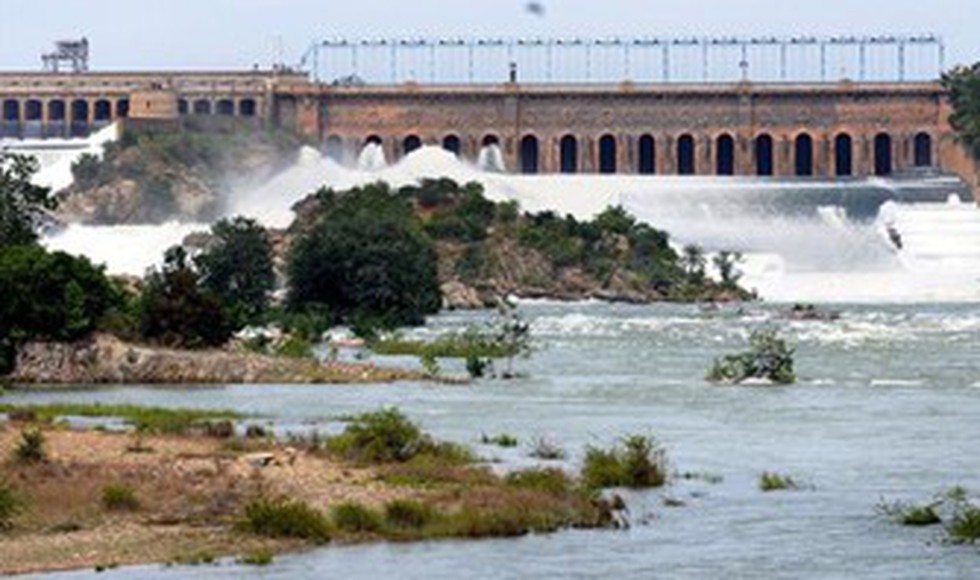About Krishnaraja Sagar (KRS) Dam:
- It is a type of gravity dam.
- Location: It is located below the confluence of river Kaveri with its tributaries, Hemavati and Lakshmana Tirtha, in the district of Mandya in Karnataka.
- Usage:
- The water from the Dam is used for irrigation in Mysore and Mandya and is the main source of drinking water for Mysore, Mandya and Bengaluru city.
- It also ensures power supply to the Shivanasamudra hydroelectric power station.
- The water released from this dam flows into the state of Tamil Nadu and is stored in the Mettur dam in the Salem district.
- History:
- The dam was constructed during the rule of the Maharaja of Mysore, Krishnaraja Wadiyar IV, and it was named in his honour.
- The construction of the KRS Dam began in 1911 and it was completed in 1931.
- The dam was designed by Sir M. Visvesvaraya, a famous Indian engineer.
- Features:
- It was built using a mixture of surki mortar and limestone.
- It is 2,621 meters (8,600 ft) long and 40 meters (130 ft) high.
- It has arch type 177 Iron sluices, and some of them have automatic doors.
- Its reservoir is about 130 Sq. Kms, which was the largest in Asia at the period when it was built.
- Brindavan Gardens, an ornamental garden, is attached to the dam.
Key Facts about Kaveri river:
- Kaveri, also spelt Cauvery, is a sacred river of southern India. It is known as the Ganga of South India.
- Origin: It rises on Brahmagiri Hill of the Western Ghats in southwestern Karnataka state.
- It flows in a southeasterly direction for 765 km through the states of Karnataka and Tamil Nadu and descends the Eastern Ghats in a series of great falls.
- The Cauvery basin extends over the states of Tamil Nadu, Karnataka, Kerala and the Union Territory of Puducherry.
- The river drains into the Bay of Bengal at Poompuhar in the Mayiladuthurai district of Tamil Nadu.
- Major left bank tributaries: Harangi, the Hemavati, the Shimsha and the Arkavati.
- Major right bank tributaries: Lakshmantirtha, the Kabbani, the Suvarnavati, the Bhavani, the Noyil and the Amaravati
